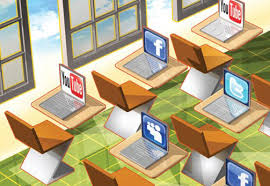Teachers face the risk that their private lives might be exposed or that students may use the sites inappropriately.
Yet some schools are already harnessing the power of Facebook and Twitter to excite students about education.
We thought we would assess this by considering whether the pros outweigh the cons of using social media sites in education, particularly now that social media is such an integral part of students’ lives.
There are a number of ways that teachers can take advantage of social networking both inside and outside the classroom.
Advantages include:
- Sharing ideas and experiences
- Partner with other schools
- Professional development
While social media offers up new and unknown challenges, particularly within the education sector, it’s becoming more and more clear that it is helping to improve teaching efficiency and enhancing students’ learning experiences. Young people are inspired by new technologies and by integrating them into educational practices they are taking more responsibility for their own education. This not only improves students’ overall learning experiences, it also helps students adapt to new digital practices and expectations for when they enter the competitive job market in the future.
Have your say and tweet @LearnersCloud
Tell us your experiences of using social media in the classroom or share your concerns and discuss them with our network of teaching professionals.

